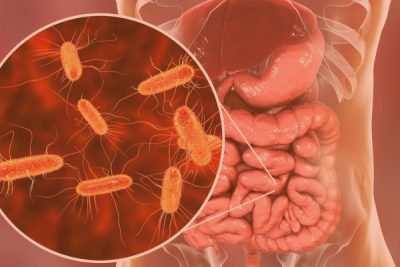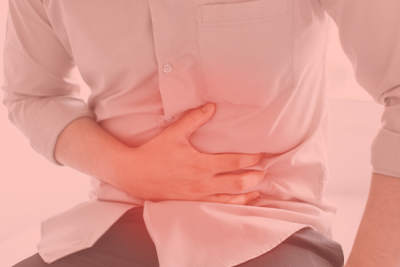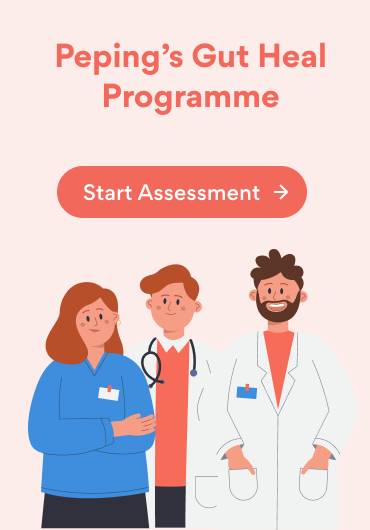Gastroesophageal Reflux Disease, commonly known as GERD, is a prevalent and often painful medical condition that affects millions of people worldwide. It occurs when stomach acid flows back into the esophagus, irritating the lining of the esophagus and causing overall discomfort.
In this article, we aim to discuss the intricacies of GERD at length so that the reader will be able to act upon such a condition appropriately. We will explore the anatomy of the disease, its symptoms, guidelines to proper diagnosis, and the best treatment options available.
Physiology of the Digestive System: how it works
In order to begin understanding GERD, we must first understand the anatomy and physiology of the digestive system. The gastrointestinal tract is a complex network responsible for breaking down food and absorbing nutrients. For the sake of this discussion, we will limit it to the functioning of the stomach and the esophagus, the 2 organs most affected by GERD.
The esophagus is the tube that connects the mouth to the stomach. It contains a muscular ring called the Lower Esophageal Sphincter (LES), which acts as a valve to prevent stomach acid from entering the esophagus. In a healthy individual, the LES opens to allow food into the stomach and closes to keep stomach contents from flowing back up, and it does so in a timely manner.
How does GERD affect the Digestive System?
GERD develops when the LES fails to function properly. When the LES malfunctions, it does not seal the esophagus effectively, resulting in the backflow of stomach acid and contents, which is a hallmark of GERD.
The dysfunction of the LES can occur due to various reasons. A few common causes include –
- Weakening of the LES over time, which can be associated with aging or certain medical conditions.
- Hiatal hernia is another contributing factor. A hiatal hernia occurs when part of the stomach pushes up into the chest through the diaphragm, affecting the positioning and function of the LES, leading to increased reflux of stomach acid.
Lifestyle choices too contribute to development of GERD
Poor dietary habits, such as –
- Consuming high-fat or spicy foods, caffeine, alcohol, and acidic items, can trigger GERD symptoms by promoting excess stomach acid production or relaxing the LES.
- Obesity is also strongly linked to GERD, as excess body fat can put pressure on the stomach, forcing stomach contents back into the esophagus.
- Smoking too can weaken the LES and irritate the esophagus lining.
- Lying down after meals allows gravity to work against the proper functioning of the LES, increasing the likelihood of reflux.
How GERD can harm the body?
When stomach acid frequently reaches the delicate lining of the esophagus, it causes inflammation. Over time, this chronic exposure to stomach acid can cause erosions and ulcers in the esophageal lining. In severe cases, the chronic irritation can lead to Barrett’s esophagus, a condition where the esophageal lining undergoes changes and increases the risk of esophageal cancer.
Symptoms of GERD
The symptoms of GERD can range from mild to severe and may include:
- Heartburn: Perhaps the most prevalent symptom of GERD, heartburn is characterized by a burning sensation in the chest. It typically occurs after eating, especially when lying down or bending over. The discomfort can often be mistaken for a heart attack due to its chest location and intense nature.
- Regurgitation: This symptom involves the backflow of stomach contents, including stomach acid and partially digested food, into the mouth or throat. It may feel like a sour or bitter taste and is often accompanied by a feeling of a lump in the throat.
- Chest Pain: GERD-related chest pain can be confusing as it may mimic heart-related pain. It tends to be sharp and may radiate to the back, neck, or shoulders, making it important to differentiate it from cardiac issues.
- Difficulty Swallowing (Dysphagia): When stomach acid irritates the esophagus lining, it can lead to narrowing or strictures in the esophagus, making it challenging to swallow solid foods or even liquids.
Some atypical symptoms that may be associated with GERD are –
- Chronic Cough: GERD-induced irritation of the throat and airways can lead to a persistent, dry cough. This cough is usually worse at night or after meals and may not respond well to typical cough medications.
- Hoarseness or Sore Throat: Stomach acid reaching the voice box can cause inflammation and damage to the vocal cords, resulting in a hoarse voice or a persistent sore throat.
- Asthma Exacerbation: In some cases, GERD can worsen asthma symptoms or trigger asthma attacks. The reflux of stomach contents can irritate the airways, leading to bronchospasms and respiratory distress.
- Dental Erosion: The recurrent exposure of tooth enamel to stomach acid can erode the teeth, leading to dental issues such as tooth sensitivity, decay, and enamel loss.
- Laryngitis: Chronic inflammation of the larynx (voice box) due to acid irritation can lead to recurrent laryngitis, causing discomfort and affecting voice quality.
- Chronic Sinusitis: GERD can aggravate chronic sinus issues, as stomach acid may reach the nasal passages and sinuses, leading to inflammation and congestion.
Recognizing both common and atypical symptoms is crucial because GERD can vary greatly in its presentation among individuals. Often, people may experience a combination of symptoms, making diagnosis challenging without medical evaluation.
If left untreated, GERD can lead to severe complications, including an increased risk of esophageal cancer.
Diagnosis of GERD
In the event of visible symptoms, prompt and accurate diagnosis is crucial to initiate appropriate treatment and prevent potential complications associated with GERD.
Patient History and Symptom Evaluation:
Medical professionals will inquire about –
- Frequency, duration, and intensity of symptoms, such as heartburn, regurgitation, chest pain, and difficulty swallowing.
- They may also inquire about any atypical symptoms like chronic cough, hoarseness, or dental erosion, which can be associated with GERD.
- Other factors that could contribute to GERD development, including dietary habits, lifestyle choices, and medical history.
- They will also inquire about any medications the patient is taking, as certain drugs may aggravate or alleviate GERD symptoms.
Diagnostic Tests and Procedures:
Based on identified symptoms and the physical examination, healthcare providers may recommend specific diagnostic tests and procedures to confirm the diagnosis and assess the severity of the condition. Some of them include –
- Endoscopy: It is a diagnostic procedure that involves inserting a flexible tube with a light and camera (endoscope) into the esophagus. It allows visualization of the esophagus and stomach lining, helping identify signs of inflammation, erosions, ulcers, and Barrett’s esophagus.
- Esophageal pH Monitoring: This test measures the acidity level (pH) in the esophagus over a period of time to determine the frequency and duration of acid reflux episodes. It can help correlate symptoms with acid reflux events and assess the effectiveness of treatment.
- Esophageal Manometry: This test measures the pressure and coordination of muscle contractions in the esophagus. It helps assess the function of the lower esophageal sphincter (LES) and the esophageal muscles, providing valuable information about GERD mechanisms.
- Barium Swallow Test: During this X-ray procedure, the patient swallows a barium solution, which coats the esophagus and stomach. X-rays are then taken to observe the movement of the barium, highlighting any abnormalities or reflux patterns.
Complications of Untreated GERD
It is crucial to recognize and address GERD promptly to prevent long-term consequences and potential damage to the esophagus.
Complications arising in the esophagus:
- Barrett’s Esophagus: Chronic exposure to stomach acid in the esophagus can lead to persistent inflammation and irritation. Over time, this can cause the esophageal lining to undergo changes, resulting in a condition known as Barrett’s esophagus. In Barrett’s esophagus, the normal esophageal cells are replaced by cells that resemble the lining of the intestine. This transformation significantly increases the risk of esophageal cancer.
- Esophageal Strictures: Repeated injury to the esophagus can result in scar tissue formation, leading to the narrowing of the esophageal passage. Esophageal strictures can cause swallowing difficulties and require medical intervention to dilate or widen the esophagus.
- Esophageal Ulcers: The constant presence of stomach acid in the esophagus can lead to the formation of painful ulcers, further exacerbating symptoms and complications.
- Respiratory complications: Stomach acid and digestive juices that reflux into the throat and airways can irritate the respiratory tract, leading to Chronic coughing, wheezing, and exacerbation of asthma symptoms. In some severe cases, it may cause respiratory infections and lung-related issues.
- Dental Complications: The chronic exposure of tooth enamel to stomach acid can erode the protective layer, leading to dental issues like tooth sensitivity, cavities, and enamel loss.
- Acid reflux from GERD can also contribute to gum disease and bad breath.
GERD Treatment Options
Fortunately, Gastroesophageal Reflux Disease (GERD) is a treatable condition, and various treatment options are available to manage its symptoms and prevent complications. Depending on the severity of GERD and individual patient factors, healthcare providers may recommend a combination of lifestyle modifications, over-the-counter medications, prescription medications, or surgical interventions.
Lifestyle Modifications:
- Diet: Patients are often advised to avoid trigger foods such as fatty, spicy, and acidic items, caffeine, and alcohol. Consuming smaller, more frequent meals and avoiding large meals close to bedtime can also reduce the likelihood of acid reflux.
- Weight Loss: For individuals who are overweight or obese, shedding excess weight can alleviate pressure on the stomach and lower esophageal sphincter, reducing the risk of acid reflux.
- Quitting smoking: Quitting smoking is beneficial for GERD patients as smoking can weaken the lower esophageal sphincter and exacerbate reflux symptoms.
- Elevating the Head of the Bed: Raising the head of the bed by 6 to 8 inches can help prevent stomach acid from flowing back into the esophagus during sleep.
Over-the-Counter Medications:
- Antacids: Antacids provide quick relief by neutralizing stomach acid. They are available in various forms (liquid, chewable tablets, etc.) and can be used as needed for occasional heartburn.
- H2 Blockers: Histamine-2 (H2) blockers, such as ranitidine and famotidine, reduce stomach acid production. They are more potent than antacids and can provide relief for a longer duration, typically up to 12 hours.
Prescription Medications:
- Proton Pump Inhibitors (PPIs): PPIs, like omeprazole, lansoprazole, and esomeprazole, are potent medications that block the production of stomach acid. They are usually taken once daily before breakfast and provide long-lasting relief from GERD symptoms. PPIs are often prescribed for moderate to severe GERD cases or when lifestyle modifications and over-the-counter medications are insufficient.
- Prokinetic Agents: These medications help improve the movement of the gastrointestinal tract, aiding in the emptying of the stomach and reducing reflux episodes. They are less commonly prescribed due to their potential side effects.
Surgical Interventions:
For individuals with severe GERD or those who do not respond well to medications and lifestyle changes, surgical interventions may be considered. One common surgical procedure for GERD is fundoplication. During fundoplication, the upper part of the stomach is wrapped around the lower esophagus to strengthen the lower esophageal sphincter and prevent acid reflux.
Managing GERD in Special Populations
GERD can affect individuals of all ages and demographics. Special attention is needed when dealing with GERD in infants, children, pregnant women, and the elderly.
- Babies with GERD may experience feeding difficulties and discomfort, and treatment options differ from adults.
- Pregnant women should be cautious about medication use during pregnancy, and lifestyle modifications become crucial in managing their symptoms.
- The elderly may have other medical conditions that interact with GERD, necessitating personalized treatment plans.
Conclusion
Preventing GERD involves adopting a few simple yet effective measures. Maintaining a healthy weight, avoiding trigger foods and beverages, eating smaller meals, and refraining from lying down immediately after eating can all contribute to preventing GERD symptoms.
In conclusion, Gastroesophageal Reflux Disease (GERD) is a widespread medical condition that requires attention and appropriate management. Understanding its anatomy, symptoms, diagnosis, treatment options, and preventive measures is crucial for patients and healthcare professionals alike. By adopting lifestyle changes, seeking early diagnosis, and adhering to recommended treatments, individuals can effectively manage GERD and improve their quality of life.













